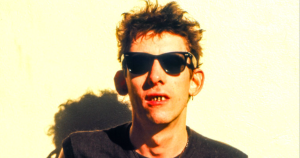Like most great traditions, “Auld Lang Syne” became the customary song for New Year’s Eve through a combination of random chance and corporate sponsorship.
The song is an old Scottish tune that’s usually credited to Robert Burns in 1788, though Burns admitted that he’d based it off of various Scottish songs and poems.
Videos by PopCulture.com
The refrain “Auld Lang Syne” roughly translates into modern English as “for the sake of old times,” so the song has always been played to commemorate the end of major events and eras. For that reason, it’s always been a popular choice for midnight on New Year’s Eve, when everyone is saying goodbye to the year that’s just passed. However, that doesn’t explain its universal presence today.
For that, we need to look at the early 20th century, when a band called Guy Lombardo and the Royal Canadians took off. Lombardo was from London, Ontario — a town founded by Scots. “Auld Lang Syne” was well-known for him and his band, and they worked it into their repertoire often.
Lombardo gave a pretty funny answer as to why the song was one of their favorites. One of the sponsors of his radio show was Robert Burns’ Cigars, so the song actually began as a subtle promotional tool.
In 1929, Lombardo and his band got hired for their first national New Year’s Eve broadcast, which they closed with “Auld Lang Syne.”
Lombardo’s New Year’s Eve performance became a staple of the holiday for Americans. In 1956, they moved from the radio to TV, where they continued playing the song at midnight every year. In fact, Lombardo’s show was the top-rated New Year’s Eve special when Dick Clark conceived of a broadcast that would draw younger viewers, which became Dick Clark’s New Year’s Rockin’ Eve.
Clark’s Show overtook Lombardo’s in ratings, and Lombardo gracefully retired from the position in 1976, just one year before his death. However, the song already had deep roots in American New Year’s Eve traditions, and it continues to be played to this day.





